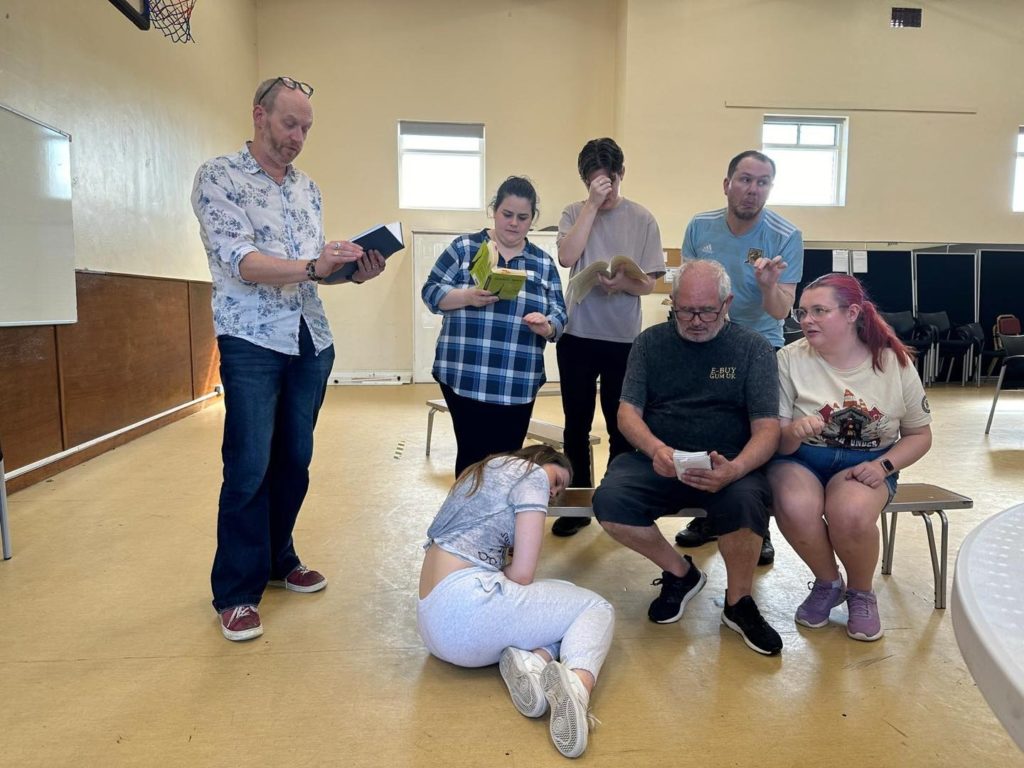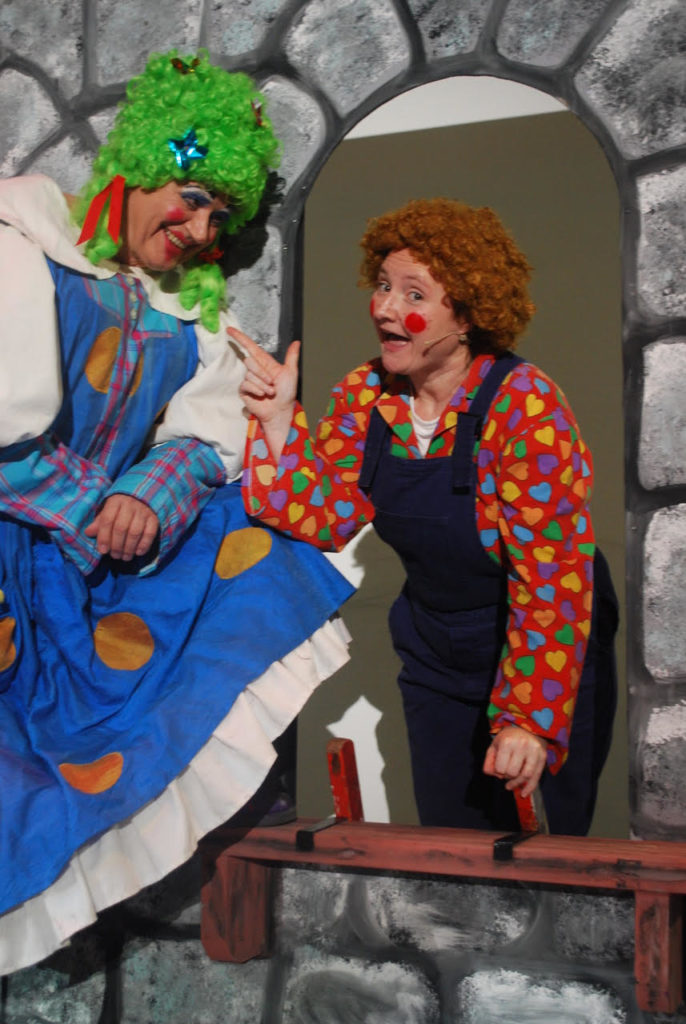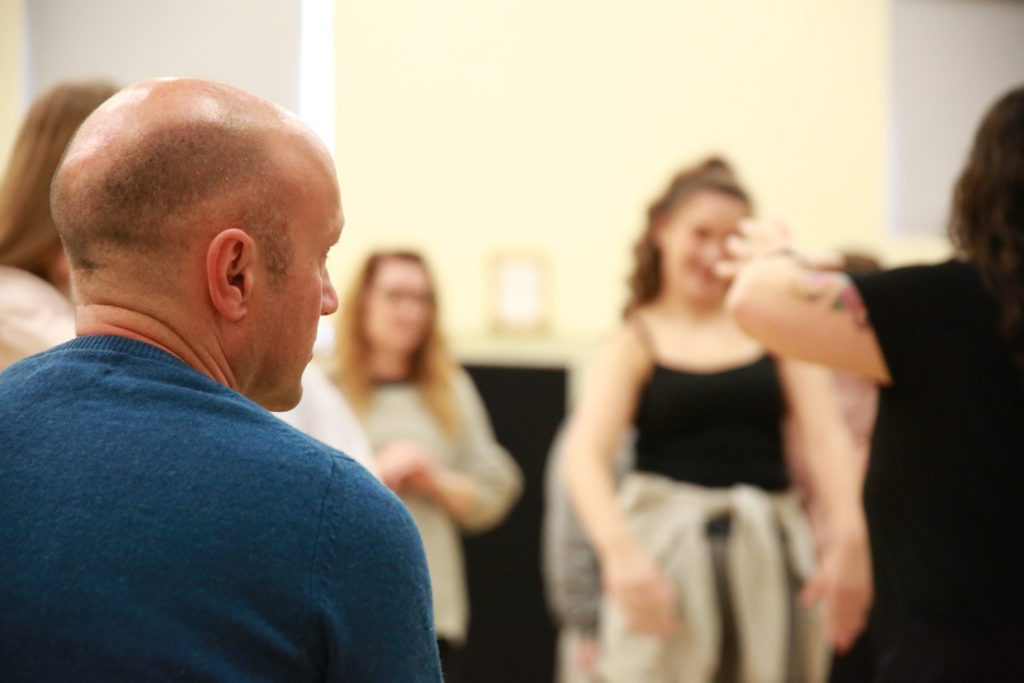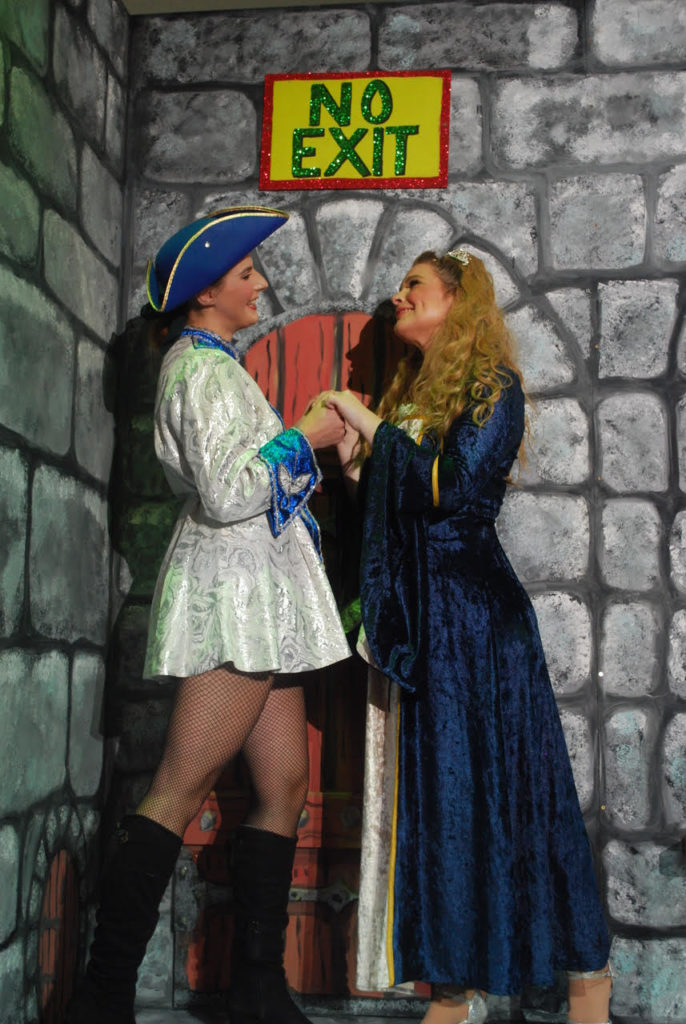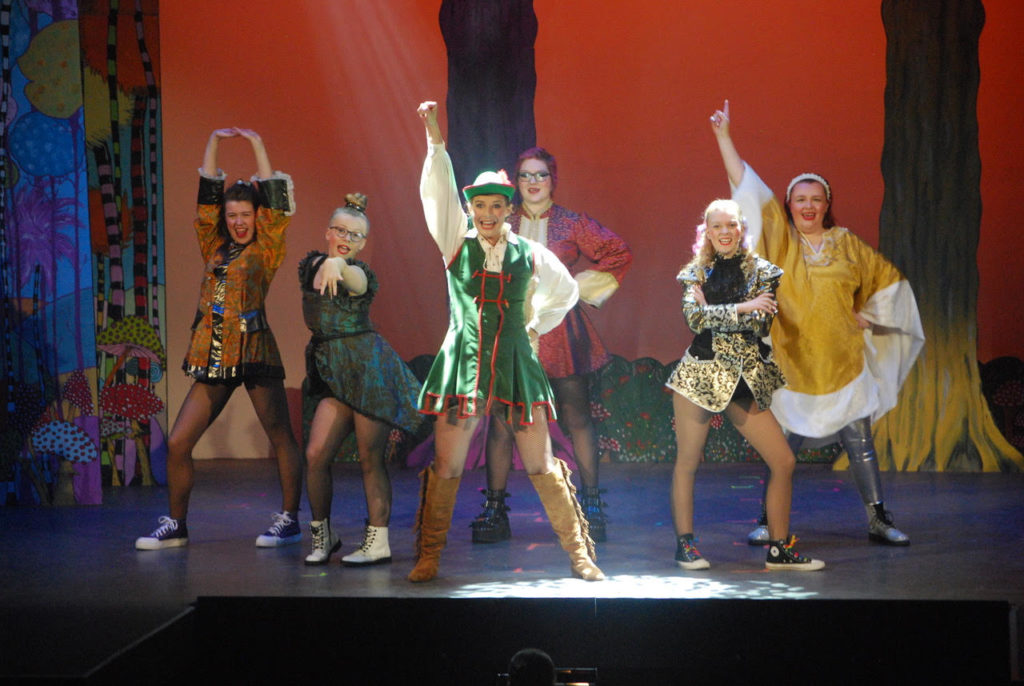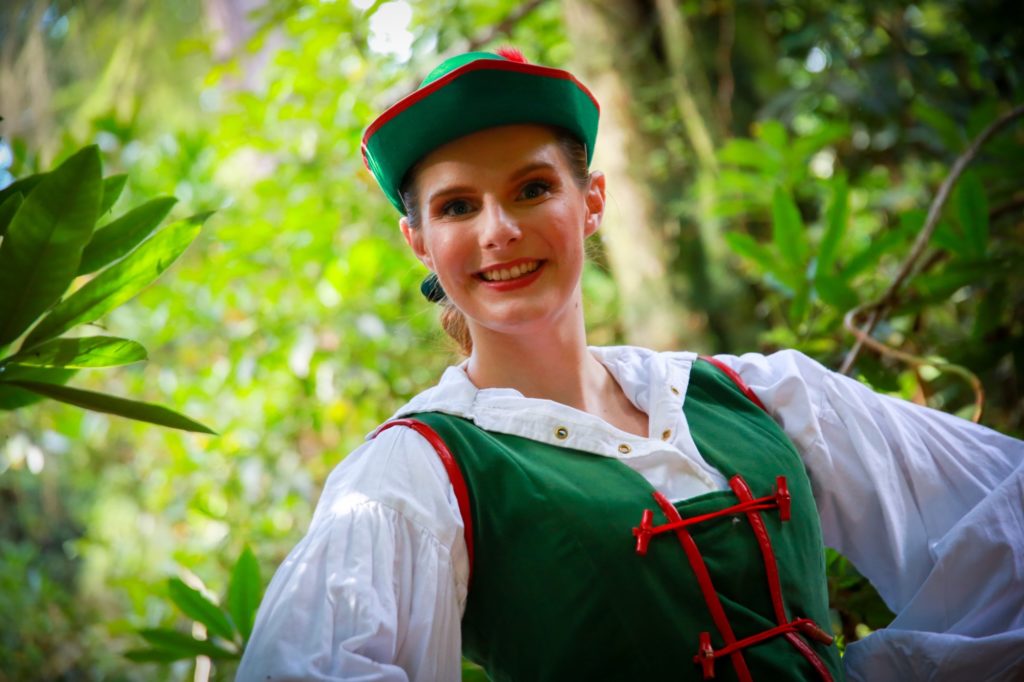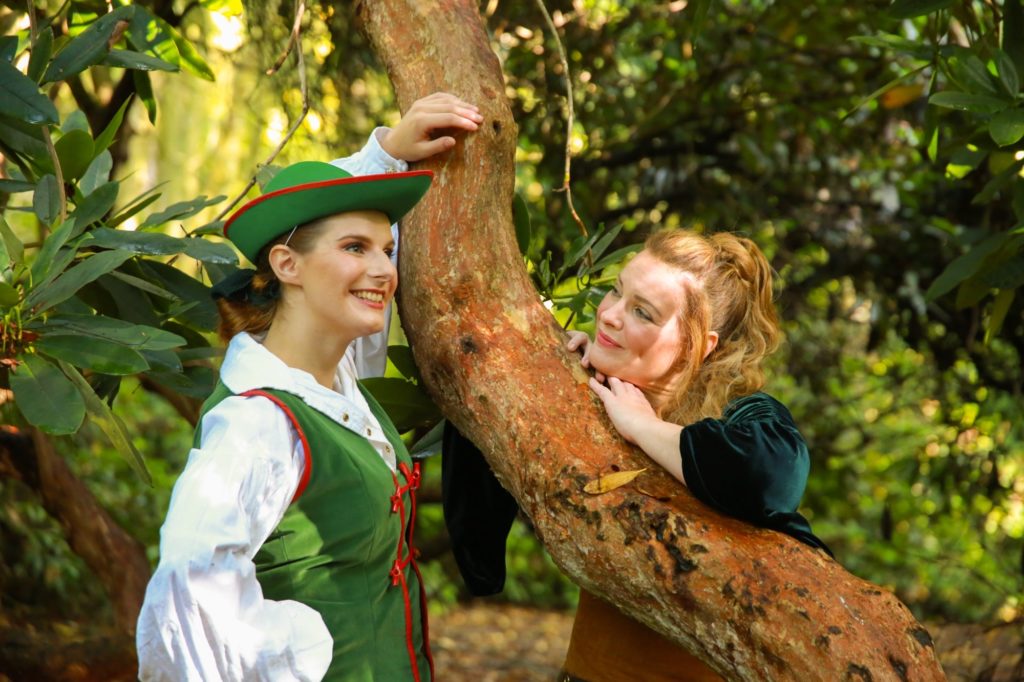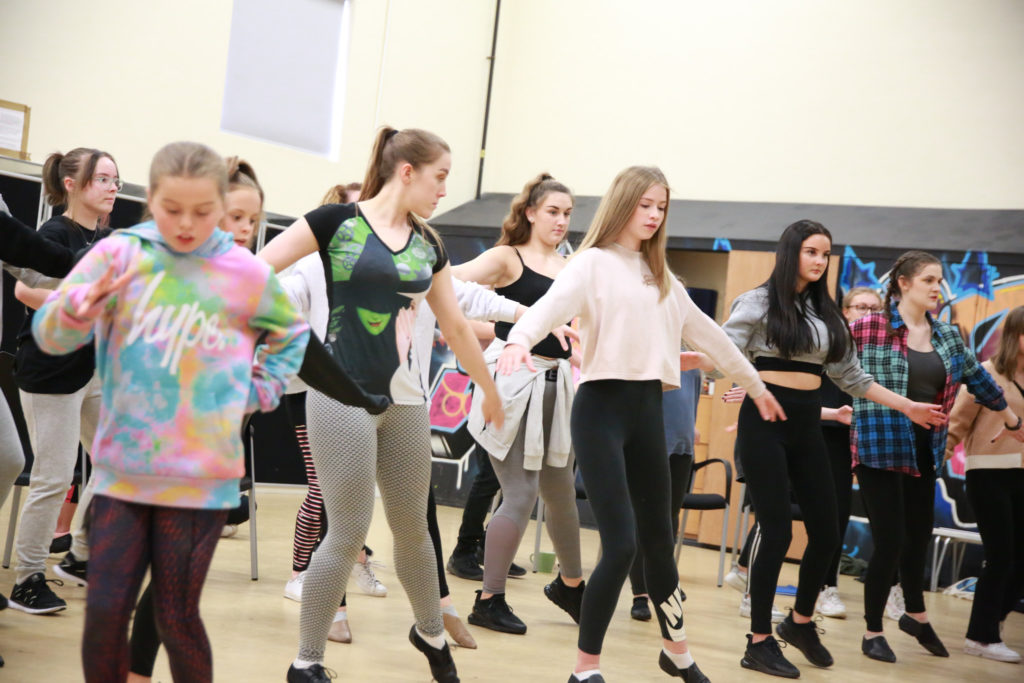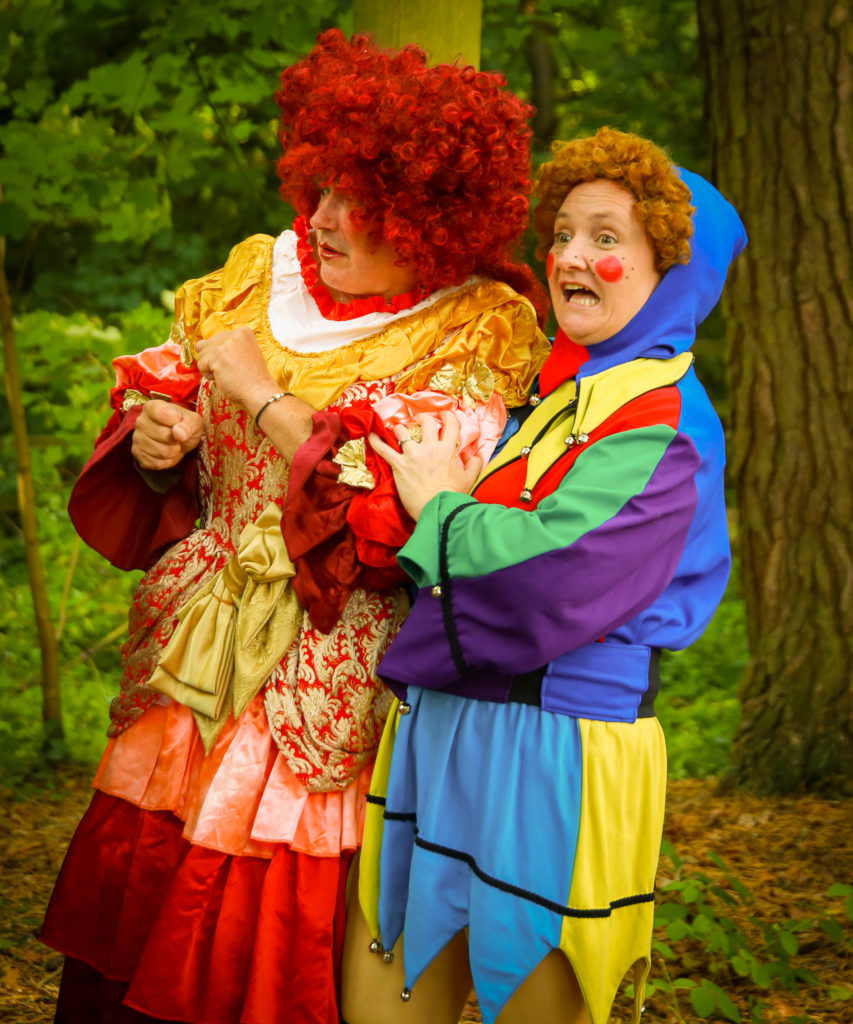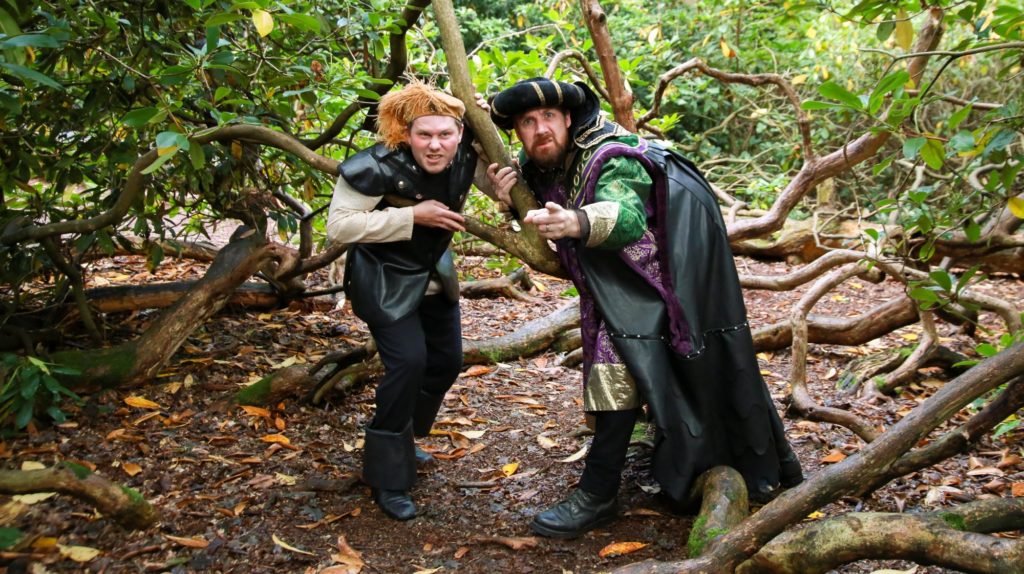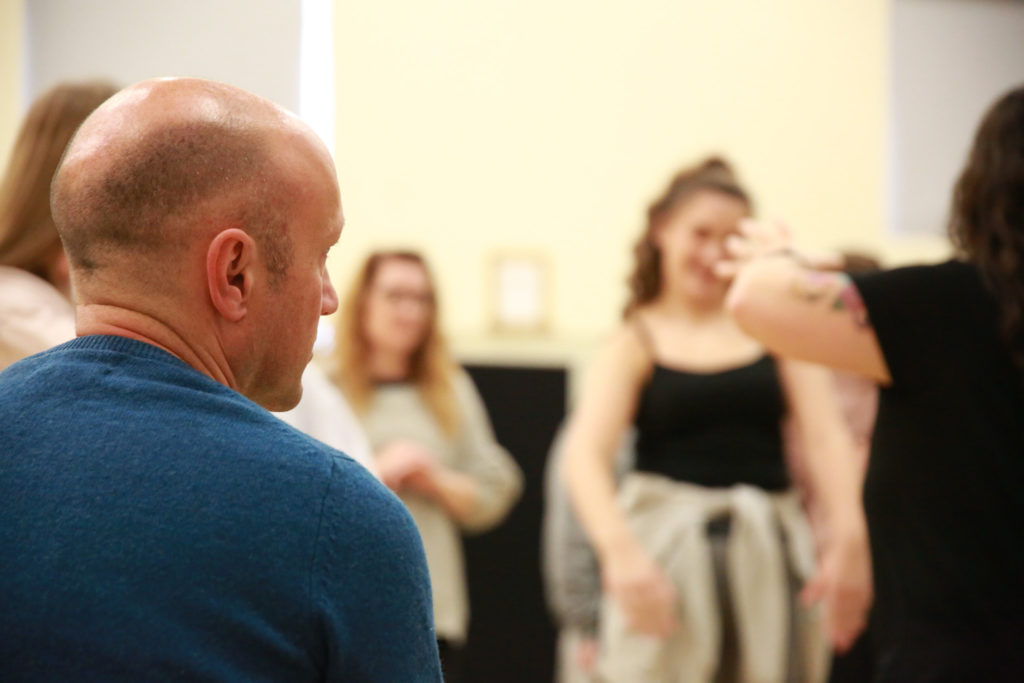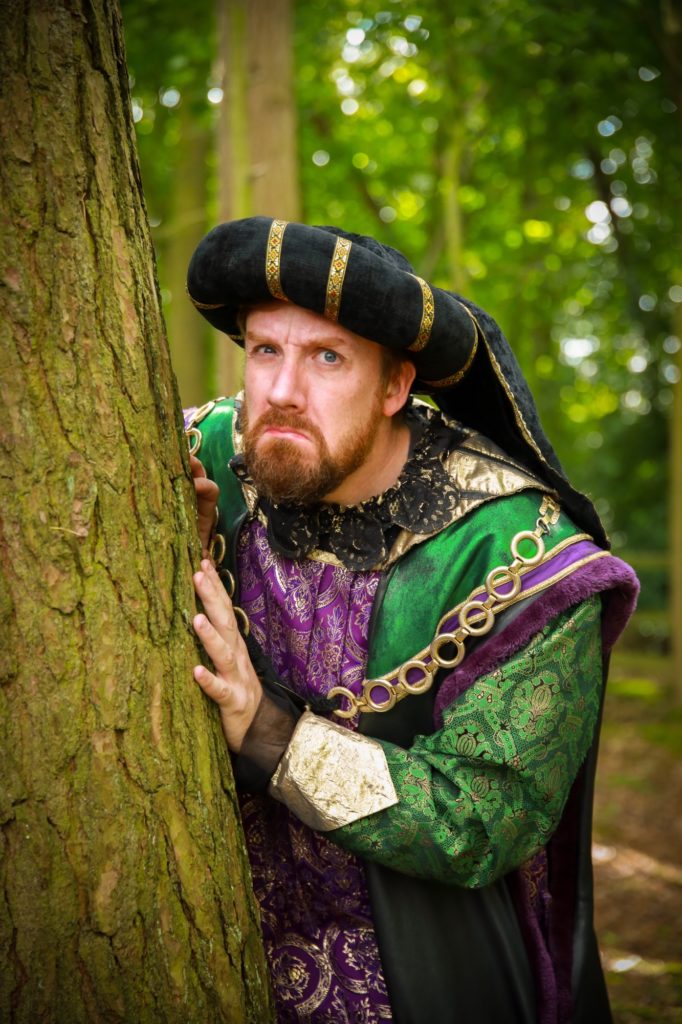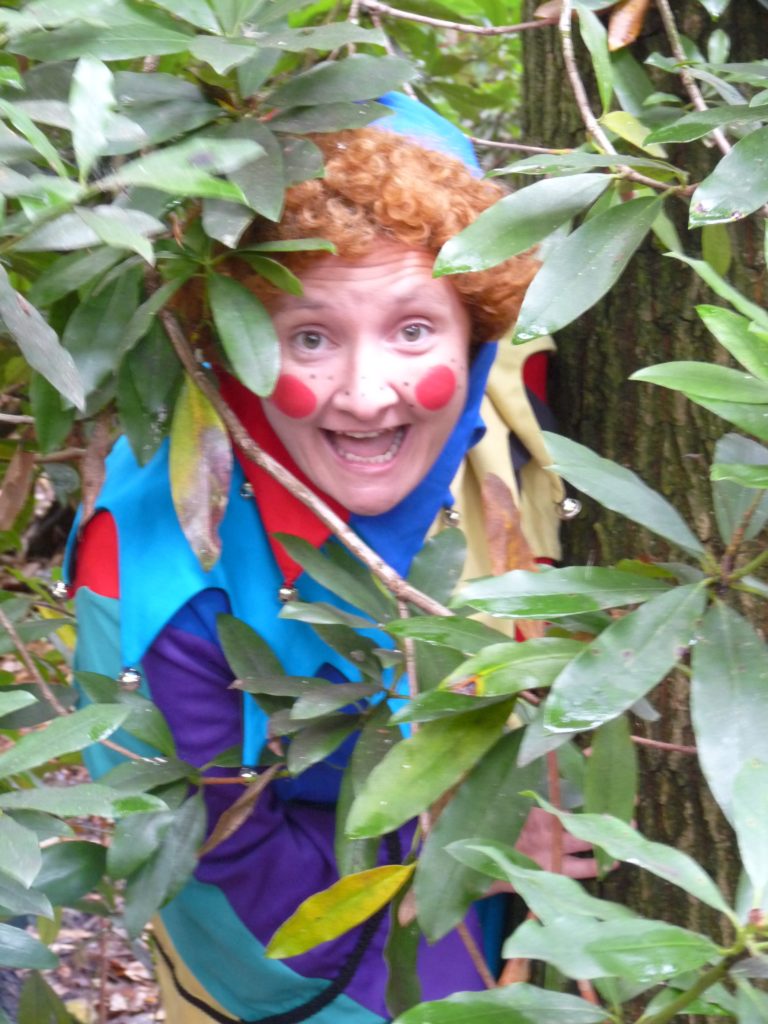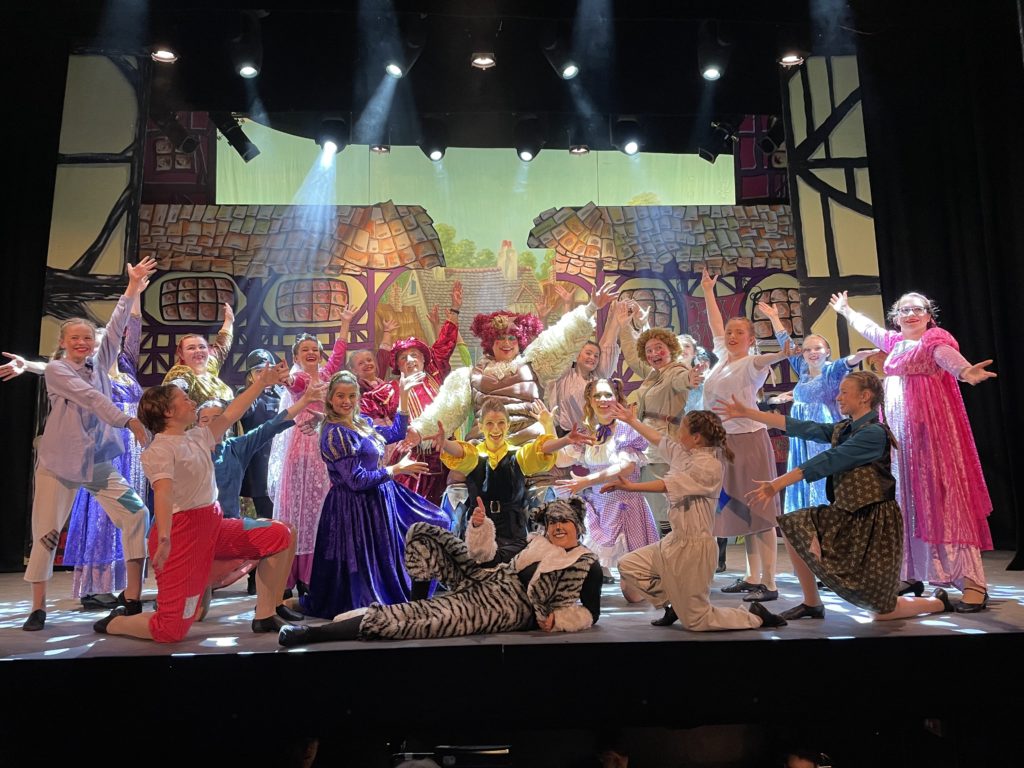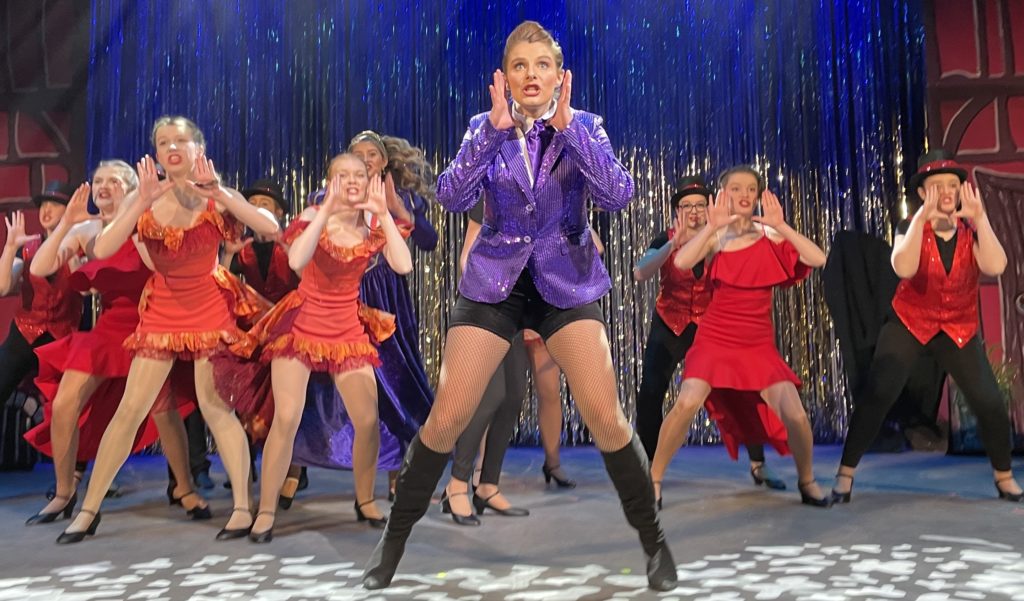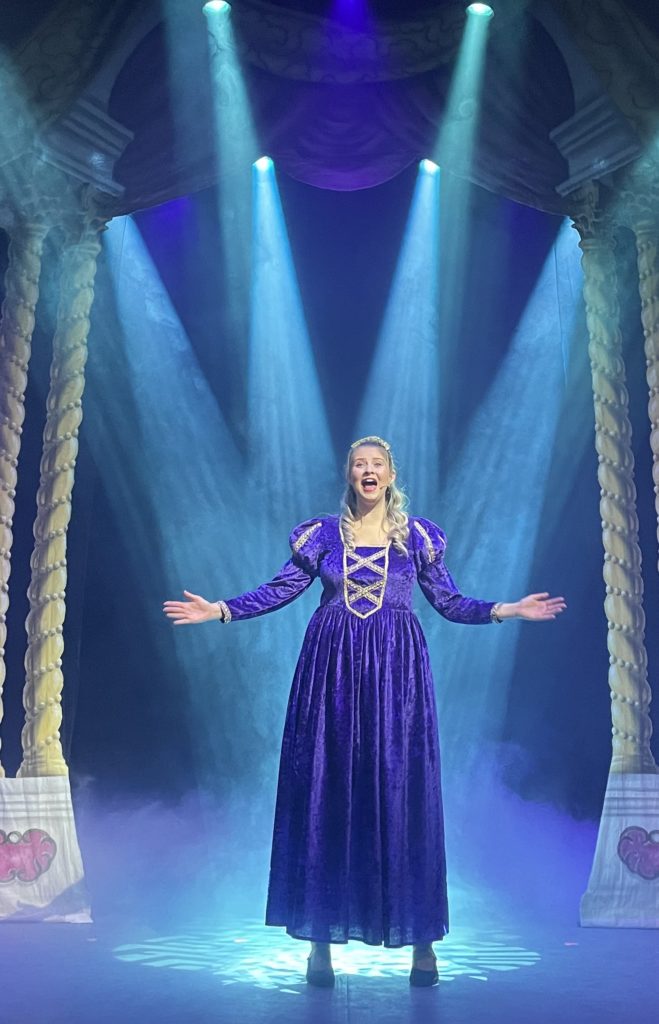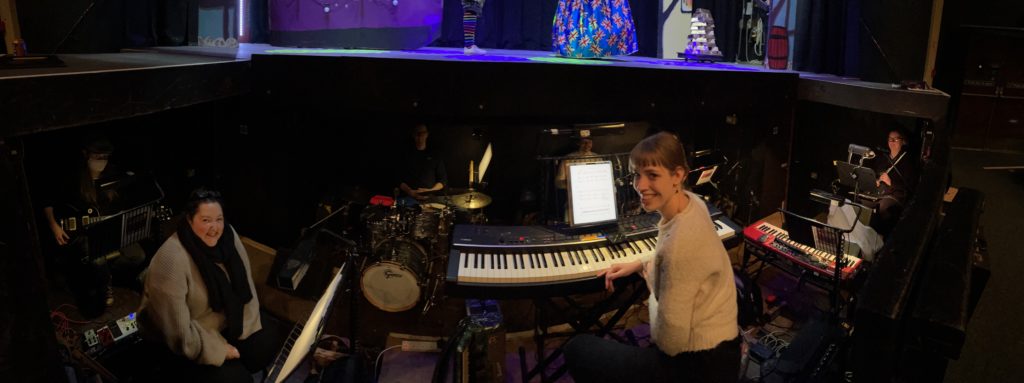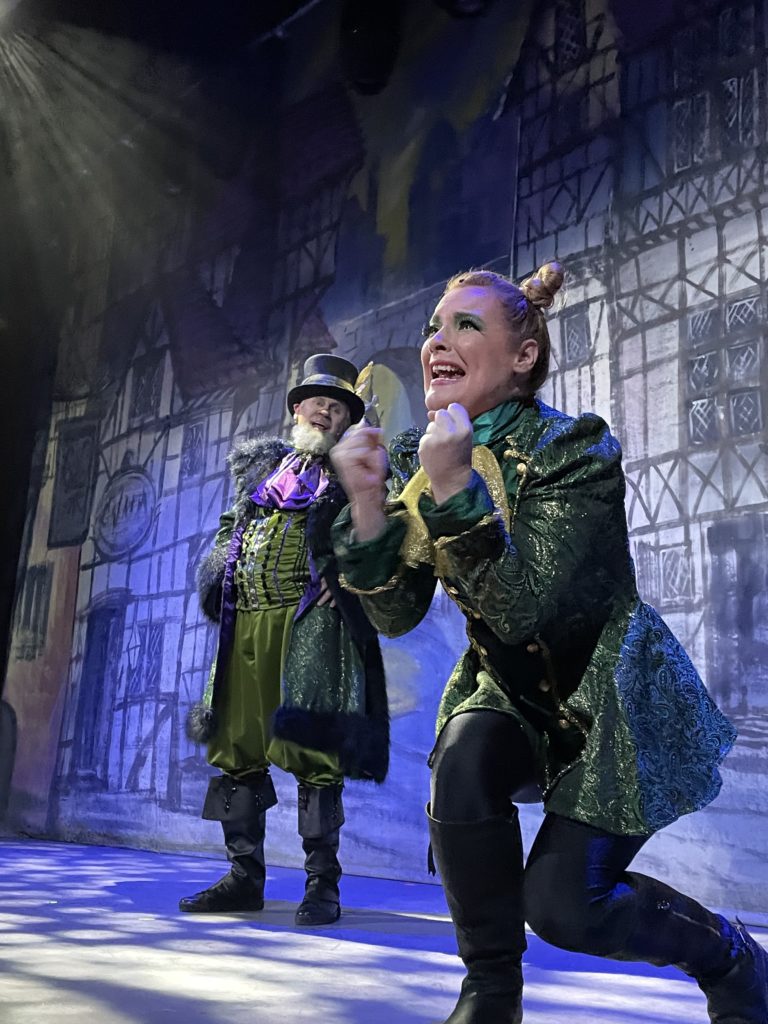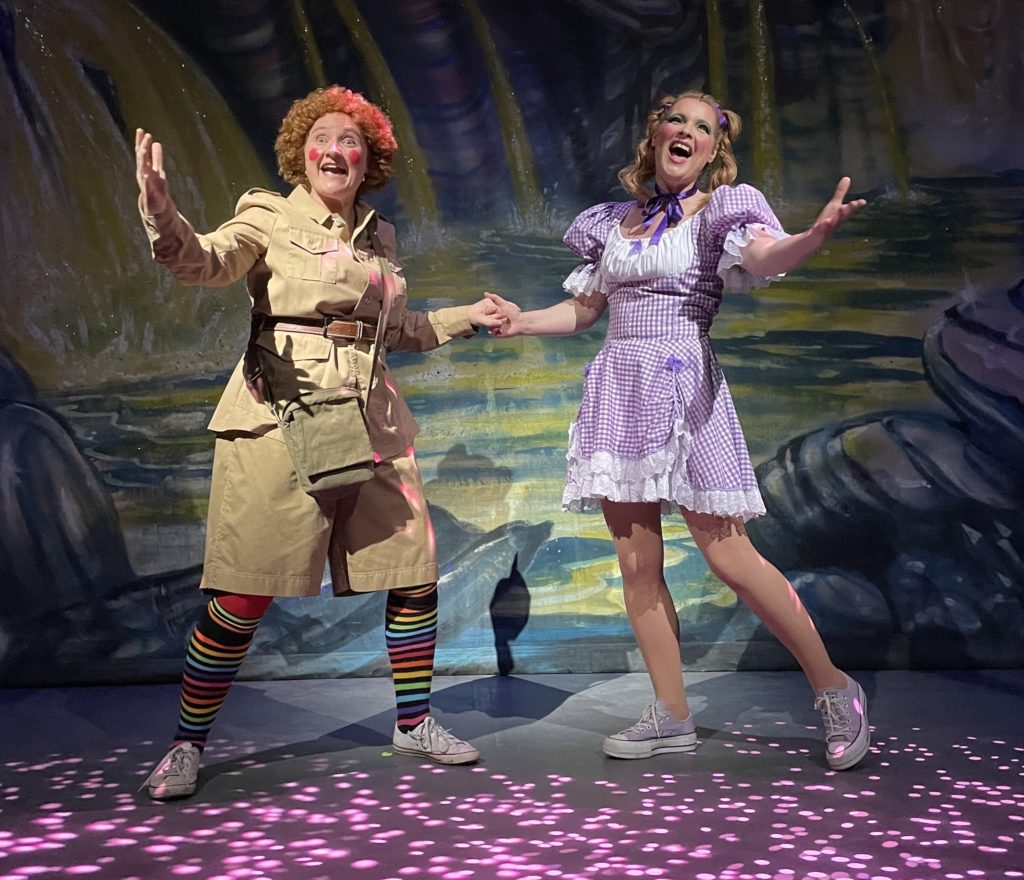
AMI Carter directs Rowntree Players in Tim Supple’s dramatisation of Carol Ann Duffy’s account of Grimm Tales at the Joseph Rowntree Theatre, York, from tonight (11/7/24) to Saturday.
Carter’s cast of 15 – aged 16 to 75 – will take a journey through delightfully bizarre stories from the Brothers Grimm collection to reveal their true origins and to expose how the path to a happy ending can, indeed, be a little grim.
Guided by Chris Meadley in the Narrator’s role, they will perform three “meaty” tales in each half, complemented by a Meadley monologue: The Mouse, The Bird and The Sausage, performed as a shadow play in the first half, and Sweet Porridge, in a more physical staging, after the interval.
“Each tale will be a maximum of 20 minutes, some of them shorter,” says Ami. “They were first done by the Young Vic Theatre Company in 1996 and 1997, when Tim Supple turned Carol Ann Duffy’s adaptation into dialogue and split it among the characters, introduced by a Narrator, with the characters then taking over the narration.
“In our production, in Snow White, Chris will play both the Narrator and the Magic Mirror, which is a nice dual role to have, and in most of the others he will set the scene, comment on the moral of the tale and make quips to link one tale to the next.”
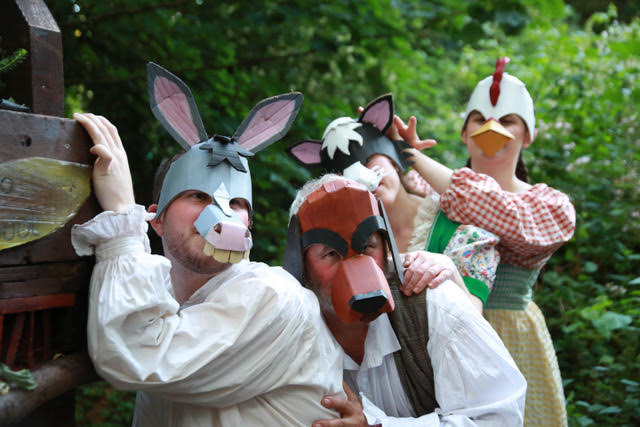
Ami has changed the original order of tales from the Young Vic productions to suit the streamlined structure of eight tales and to maximise narrative momentum. “Hansel & Gretel is the only tale that ends with ‘And they all lived happily ever after’, so I knew I wanted to end the show with that one,” she says.
“The biggest balancing act is to achieve light and shade, and with the dark nature of some stories, you don’t want to bring the energy down, so some of the stories are just farces, because the show needs to be a rollercoaster, not a nosedive.
“It’s not that some stories don’t have a happy outcome, they do, but they end with the comeuppance for the villain, which means a couple of times – Snow White and Ashputtel (the Grimm title for Cinderella) – the tales end on a dramatic note.”
Expressing a preference for the 19th century folk tales collected by the Brothers Grimm rather than the earlier French fairy tales of Charles Perrault, Ami says: “The Grimm versions feel more like folk tales for the masses, whereas Perrault’s tales were written for the French court, the upper-class society.
“Published as Children’s and Household Tales, the Brothers Grimm turned the stories into cautionary tales for children – like the warning ‘Don’t go into woods’ – and the difference with today is now we just try to protect them from doing anything.
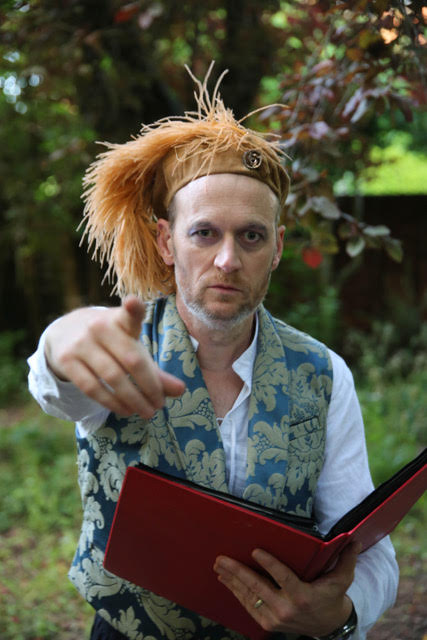
“Disney’s films have kept the original morals but made them less distressing, but the idea behind the stories was to scare children into behaving, which we don’t do now.
“Yet if we look at TV shows like Charlie Brooker’s Black Mirrors, it’s cathartic to enjoy the darkness in them. That’s the purpose of some of these stories too.”
Rowntree Players will be staging only evening performances, but that is not intended to rule out children from attending. “With our marketing, we’ve done enough to promote it’s a show on the darker side of things, and it’s probably not appropriate for younger children,” says Ami.
“But if they’re 11, 12, 13, they will really enjoy it because there’s no goriness, no jump scares, just that haunted house/Halloween vibe. It’s like Horrible Histories; it hits that sweet spot.”
Supple’s scripts have guidelines on how to distribute the roles, but Ami took her own approach, favouring multi-role playing. “I wanted to make the principal cast as small as possible, so I ended up with one narrator, four men and four women and a non-speaking ensemble of six,” she says.
“I went through the script and assigned roles working on the theory of archetypes with a mixture of ages, while knowing the pool of Rowntree Players actors we could draw on.
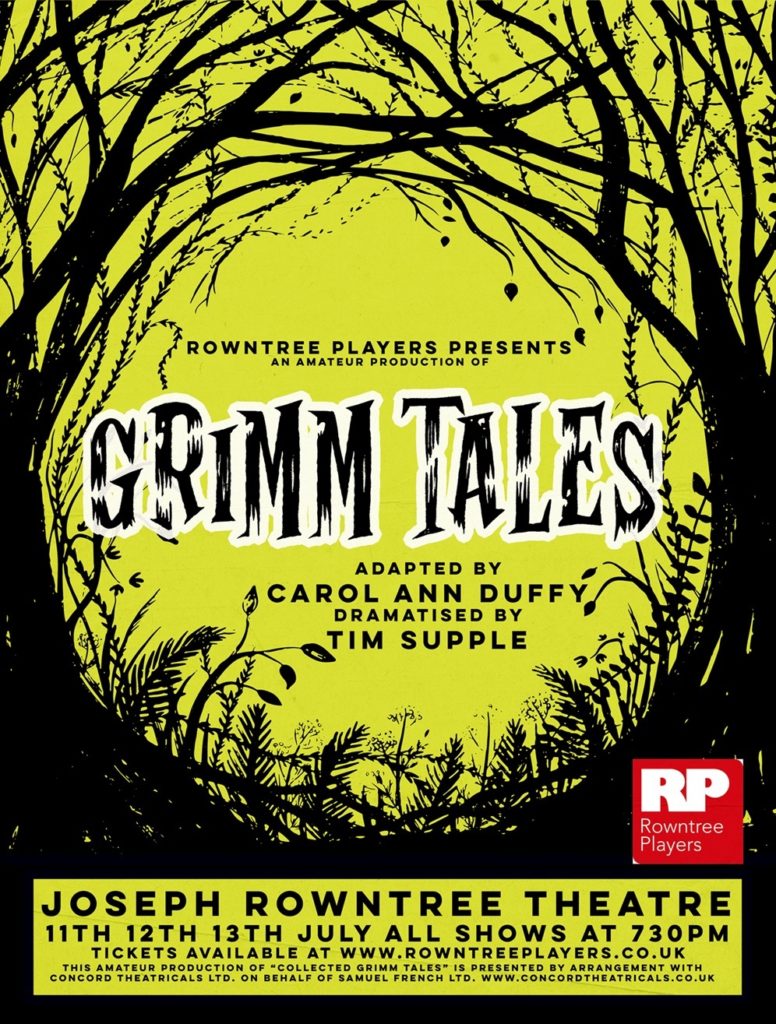
“There are ‘father’ archetypes, incorporating kings and villains; ‘mother’ archetypes, such as queens and witches; middle roles, like eldest sons, daughter and sister roles, young roles, and then some have to play cockerels and donkeys because some of the tales are very strange!”
Ami continues: “The other factor with the casting was that I was very keen for it not to be like our pantos, though a lot of the same people are involved but I tried not to cast them in roles that people would have seen them in before.
“That’s another reason Rowntree Players wanted to do Grimm Tales: to show these tales in their original light. Some are different from the pantomimes; some are very similar. Ashputtel [Cinderella] feels very different, such as characters getting their eyes pecked out.”
The production’s design will echo pantomime’s use of medieval and Renaissance costumery and sets, “but it will be much more rustic, more natural, woods, not glitter,” says Ami. “The Magic Mirror is the only thing that’s remotely sparkly.
“Grimm Tales is not bright colours and jolliness. It’s much darker than that with lots of props and puppets, like the birds I’ve made with cardboard and paper craft, as there are lots of things you can’t do with people.
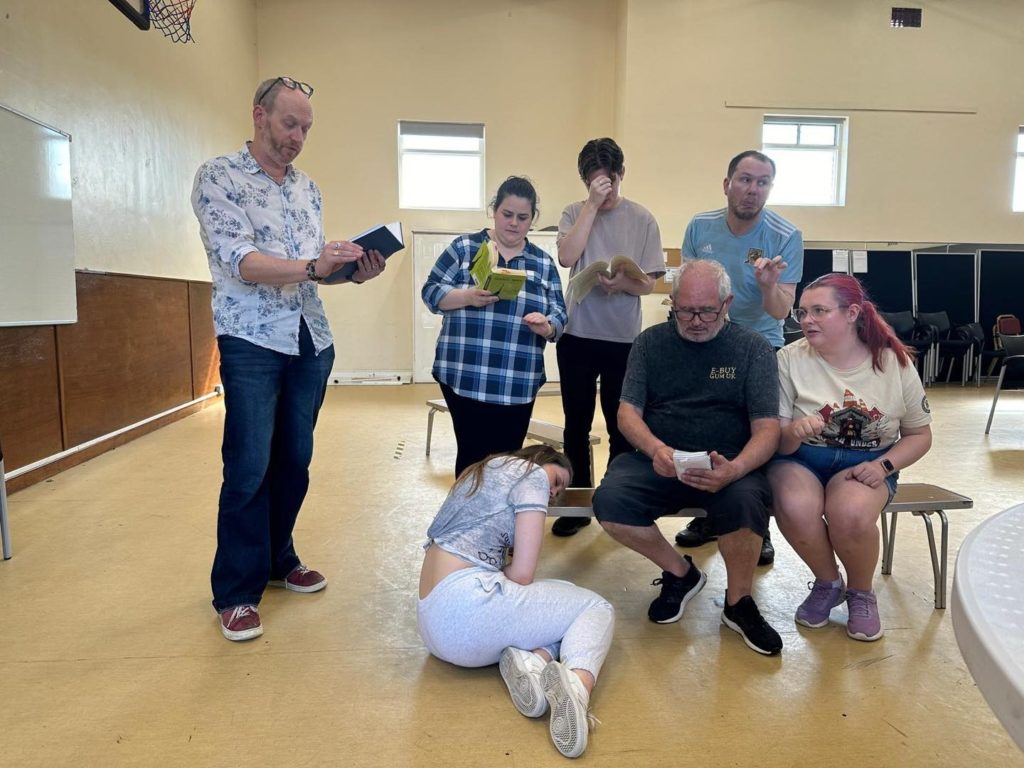
“For the ‘seven dwarfs’ in Snow White, we’re using the masks we had in our pantomime. I’ve now put eyes on them but I’m not sure it’s made them any less creepy: it’s like Snow White & The Seven Marty Feldmans!”
Rowntree Players in Grimm Tales, Joseph Rowntree Theatre, York, tonight until Saturday, 7.30pm. Box office: 01904 501395 or at josephrowntreetheatre.co.uk.
Who’s in the Grimm Tales cast?
NARRATOR Chris Meadley will be joined by Geoff Walker as Male 1; Graham Smith, Male 2; Joe Marrucci, Male 3; Fergus Green, Male 4; Abbey Follansbee, Female 1; Hannah Wood, Female 2; Meg Badrick, Female 3, and Annie Dunbar, Female 4.
In the ensemble will be Henry Cullen, Jess Whitehead, Britt Brett, Jess Dawson, Libby Roe and Ella Lofthouse.


